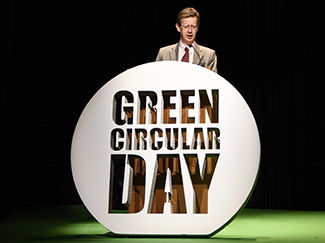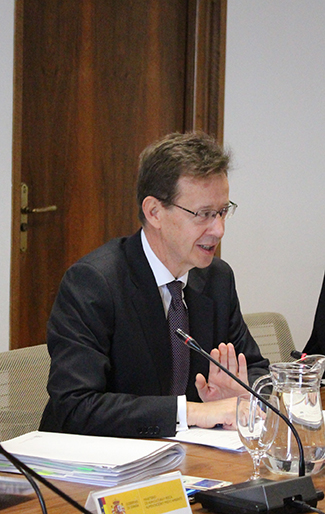consent_cookie
Duración: 1 year
Stores the user's cookie consent state
23-10-2017
Javier Cachón is responsible for the waste area in the Ministry of Agriculture and Fisheries, Food and Environment (MAPAMA). It points out as one of the pending subjects the awareness and education about the importance of recycling and reuse of waste, not just textiles, and considers that it is key to increase the numbers of selective collection.
The European Waste Framework Directive obliges to increase by 2020 to a minimum of 50% the preparation for the reuse and recycling of household and similar waste, including textiles. In Spain, this percentage is 30%. What scenario is contemplated if this goal is not achieved?
The key commitment made by the State Plan for Waste Management 2016-2022 (PEMAR) to meet this objective is to increase the separate collection of the different fractions that make up the waste. Since the approval of PEMAR, many autonomous communities and local authorities are taking steps to move forward, so we expect recycling and reuse to increase in the coming years. Likewise, MAPAMA is promoting and implementing various measures (among others, of a regulatory nature) to help achieve the objectives.
Do you consider that the management of textile waste should be a priority policy for all administrations?
As I said before, and according to PEMAR, separate collection is key to meeting recycling and waste reduction targets, especially in the case of bio-waste. Of course, the other fractions should also contribute to the achievement of the objective. The textile represents approximately 5% to 6% of municipal waste and PEMAR proposes to reuse or recycle 50% of this fraction in 2020, a figure that in tons would be close to 500,000, so it is also important to move forward in their separate collection.
What measures should be implemented to advance the reuse of textile waste and the promotion of a circular economy model?
The PEMAR includes a battery of orientations of very diverse nature to meet the objectives: implementation of new separate collections and improvement of existing ones; ensure the correct treatment of the mixed waste; development and implementation of economic instruments; information, training and awareness raising; investment orientation; development and strengthening of markets for materials and products obtained, and reinforcement of inspection, monitoring and control activities. These measures, together with the establishment of the new goals and measures being negotiated in Europe, will allow us to move towards the circular economy, in which the development of a Spanish strategy in which we are working will be a key element.
More and more public tenders for the collection of textile waste proliferate, in which the economic factor is prioritized. Do you think that this mercantilization should be stopped and aspects like experience, solvency and social purpose should be prioritized?
In public procurement, what should be the priority is to ensure the correct management of waste in accordance with the principle of hierarchy established at Community level, ie prioritizing the preparation for reuse and then recycling, then energy recovery and, ultimately, elimination.
The collection of clothing has a very high potential of use: around 9 out of 10 used garments are likely to have a second life. However, little is collected: it is estimated to be less than 10%. What should be done to increase collection levels?
It is also in recent years, probably also as a consequence of the change in economic model and consumption in the textile sector, when, as a result of an increase in the generation of this type of waste, municipal initiatives have been increased, reuse and recycling. Associated to these initiatives we have been able to see in press determines two articles questioning the prolifera
and the business activities developed around the textile waste that has made people more reluctant to deposit the used clothes in the containers. Perhaps it is necessary to make an exercise of transparency from the sector dedicated to textile waste so that people can have information and better understand the need for these activities.
In your opinion, why the textile fraction is not at the same level of consideration as the other fractions?
I think there are three reasons for this. First, the textile fraction is still a minority fraction within the municipal waste stream, especially when compared to organic, paper, glass or packaging representing 42%, 15% and 8% respectively. In addition, the existence of separate collection obligations since the entry into force of the packaging and packaging waste laws in 1997 and 1998, respectively. And, finally, to emphasize that normally the citizens have been using it directly for reuse without having to go through it municipal channel
Francisco Javier Cachón holds a degree in Biological Sciences from the Universidad Autónoma de Madrid. Since 1988 he has held positions in the General State Administration. In 2010, he was appointed director of the Cabinet of the Secretary of State for Climate Change and later joined the General Directorate of Quality and Environmental Assessment and Natural Environment MAPAMA.

